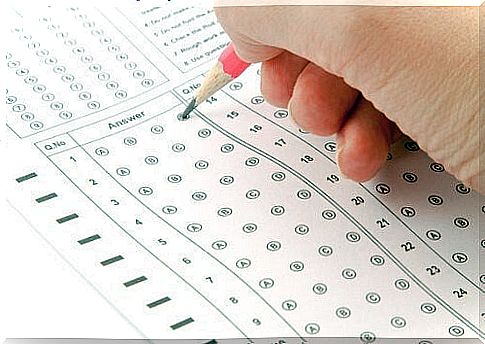Different Techniques For Personality Assessment

When we go to a job interview, the human resources experts usually ask us a series of questions that have a common goal: to evaluate our personality. Thanks to this personality evaluation, they can then further determine whether or not we are a suitable match for the job.
These kinds of interviews take place not only in the professional field but also in other areas. A clinical health care provider can perform a personality assessment to diagnose and determine whether a person has a personality disorder.
In the military or legal field, a personality assessment is used to evaluate people involved in the judicial process.
Likewise, interviews are just one of many ways to assess someone’s personality. However, there are many more techniques such as questionnaires or objective tests.
The Requirements for an Assessor
To conduct a sharp personality assessment you must have the appropriate theoretical training and experience. In addition, professional evaluations rely on theoretical models. It is therefore essential that you know these models.
As for interpretation, evaluation tests provide us with a personality profile. However, there is no linear relationship between this profile and a specific pattern of behavior.
In other words, all people who score high on extroversion don’t behave that way. We also see this in the profile. After all, the same profile can indicate different personality types. So you have to be careful.

Personality Assessment Questionnaire
Personality assessment questionnaires present a series of questions or affirmations for individuals to answer. Thus, by means of their answers, one infers their main personality traits and character traits.
There are also no right or wrong answers. The answers are simply a reflection of the candidate. How do they behave? What do they think? How do they deal with different situations?
The elements in a questionnaire do not have to be ordered or arranged. On the contrary, each item can be interpreted independently. There are two types of questionnaires:
- General Questionnaires: These lists try to determine the characteristics of a person outside the clinical setting. In other words, they are designed for personality profiles. Numerous areas can apply the results.
- Clinical questionnaires: they aim to determine the pathological features in a clinical setting. These lists are designed to identify the factors that cause a person to be at a level above or below what is considered normal. This means that they are not adapted.
Objective Tests
Along with projective tests, objective tests are the tools most commonly used to assess personality. They make it possible to evaluate different aspects: knowledge, abilities, attitudes, intelligence, and so on.
They usually don’t have a time limit either. They ask questions or present different scenarios so that the person answers in a personal and candid way. There are no right or wrong answers in these types of tests.
Objective tests are often used for diagnostic evaluations. They are also regularly used in schools. There are two types of objective tests:
- Inventories: These sheets contain numerous questions that measure personality variables. They show whether an individual agrees or disagrees with the statements. Professionals can buy them from a large number of people. Some of the most representative tests are the MMPI, the 16PF, and the NEO-PI-R.
- Other tests such as personality indicators often complement the inventories. For example, they measure expressive behavior (how someone walks, speaks, writes…), physiological variables (heart rate, reaction times…) or performance tests (problem solving, definitions…).

Using these tests avoids habitual responses (such as, for example, “B” responses) or socially desirable responses (answers in a socially acceptable manner).
Projective Tests
These kinds of tests should be done under the guidance of a therapist. After all, they require a lot of training and study. They usually help the person conducting the evaluation understand how the interviewee sees reality, focuses on reality, and how he or she controls reality.
As the name suggests, these tests allow the person to project their personality traits. So they determine what is inside each person.
These are open, unstructured and very reliable forms of personality evaluation. They also imply that the person needs few and short instructions. Almost without people realizing it, the tests show their properties. The person’s answers are expressions of their inner personality dynamics.
Types of subjective tests
- Complete the sentence: The person has to complete the suggested sentences. In this sense, he provides information about his temperament in a specific situation.
- Describing ink blots : The best-known ink blot tests were developed by Hermann Rorschach. There are 10 sheets: 5 in black ink and 5 in color. The professional expert makes an interpretation. It is based on the idea that the way the person perceives the inkblot will reflect his personality.

- Drawing: The assessor asks the person to draw something. The formal features of the drawing help to define the personality of the individual. These characteristics may be related to the slope of the paper, the intensity of the lines drawn, or the size, texture, color or position. The best known test is the Buck format (with a tree, a person and a house). Experts usually use Elizabeth Koppitz’s children’s gestalt test.
- Storytelling: This involves someone writing or telling a story. Professionals often use the TAT (Thematic Apperception Test) designed by Murray. In this test, a person has to tell a story on 31 sheets.
As we can see, there are multiple ways to evaluate personality and all its different factors, traits, and variables.
Professionals must know the most appropriate technique to use in each case. In doing so, they must take into account the individual differences of each person.









